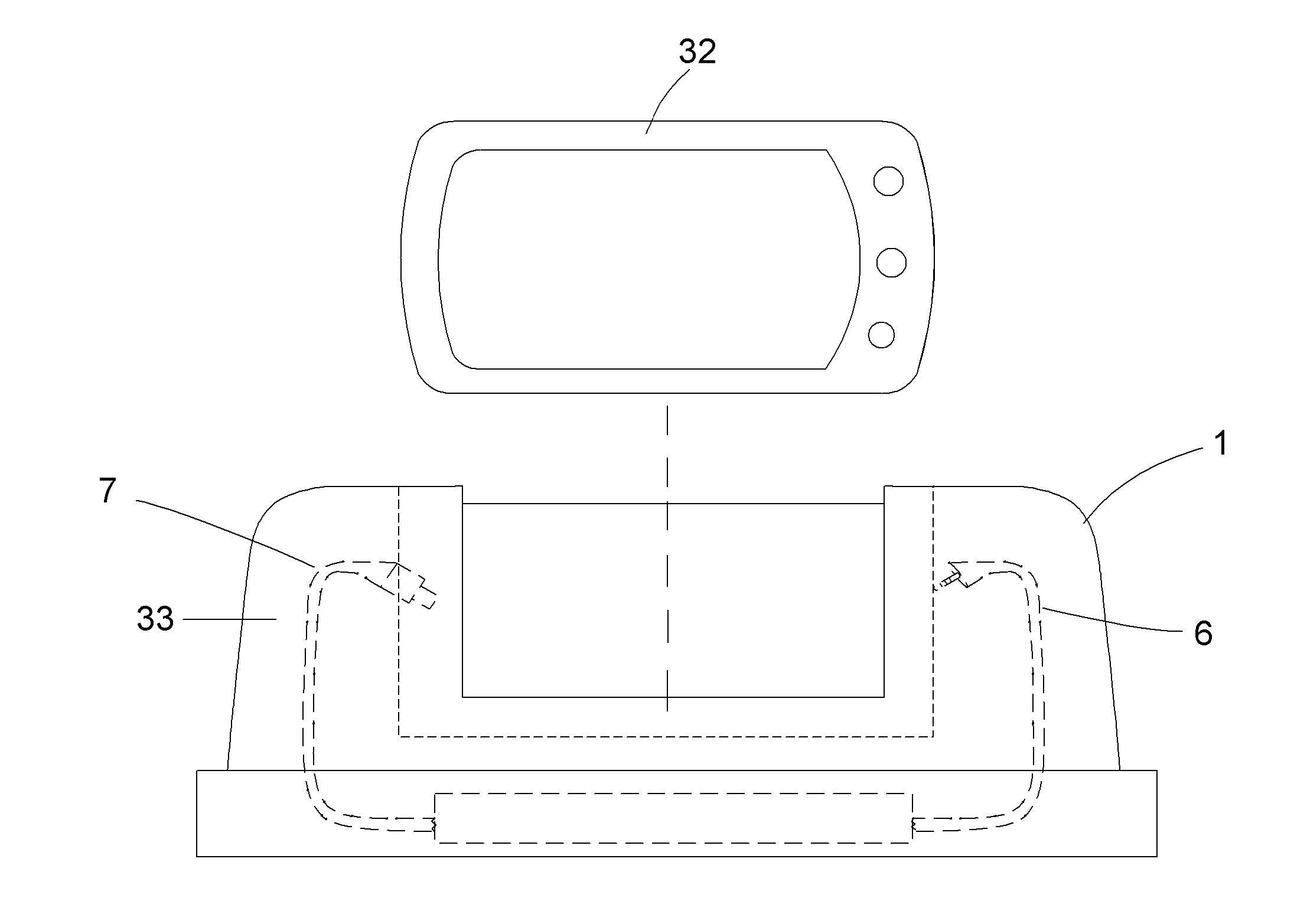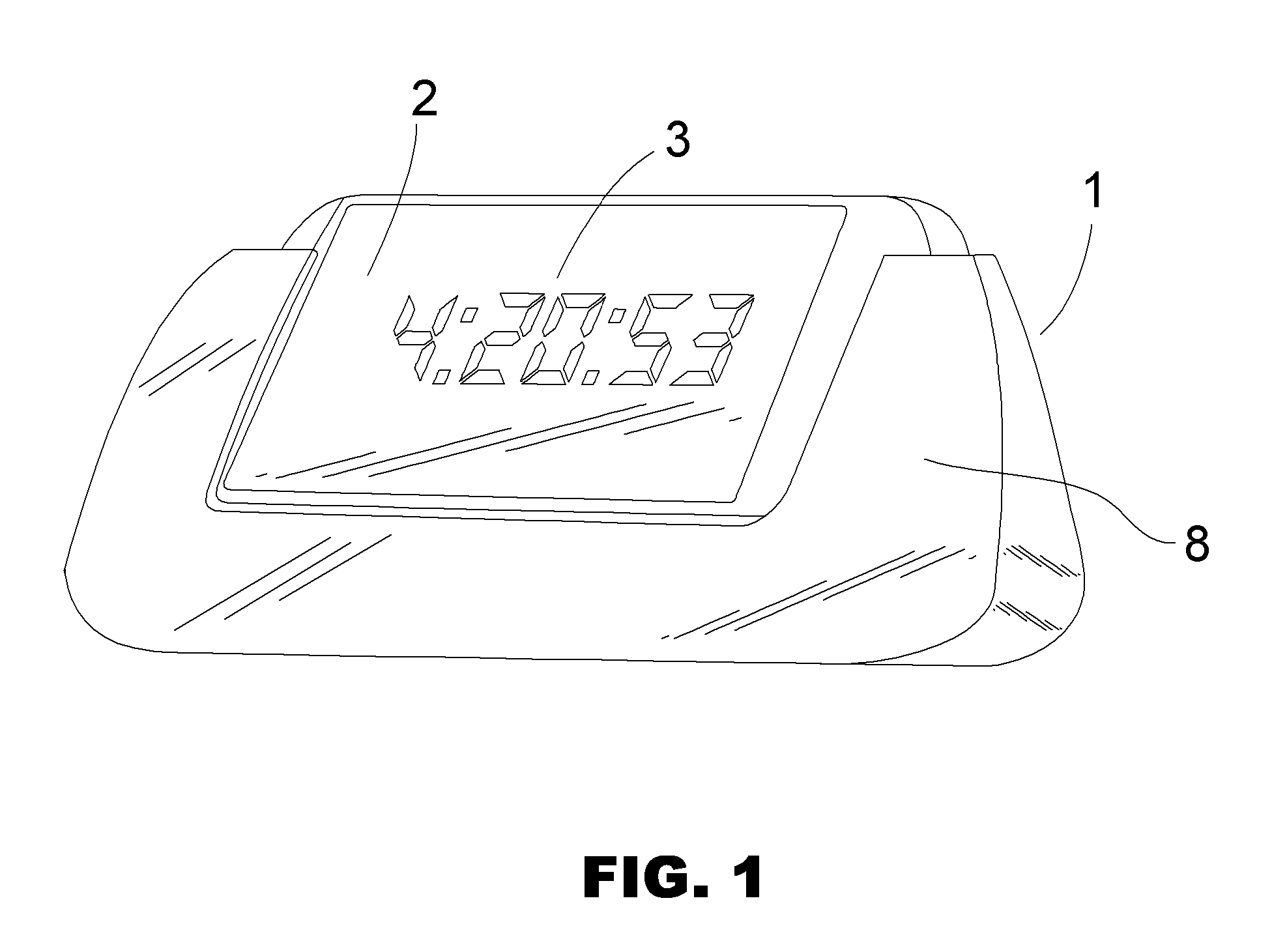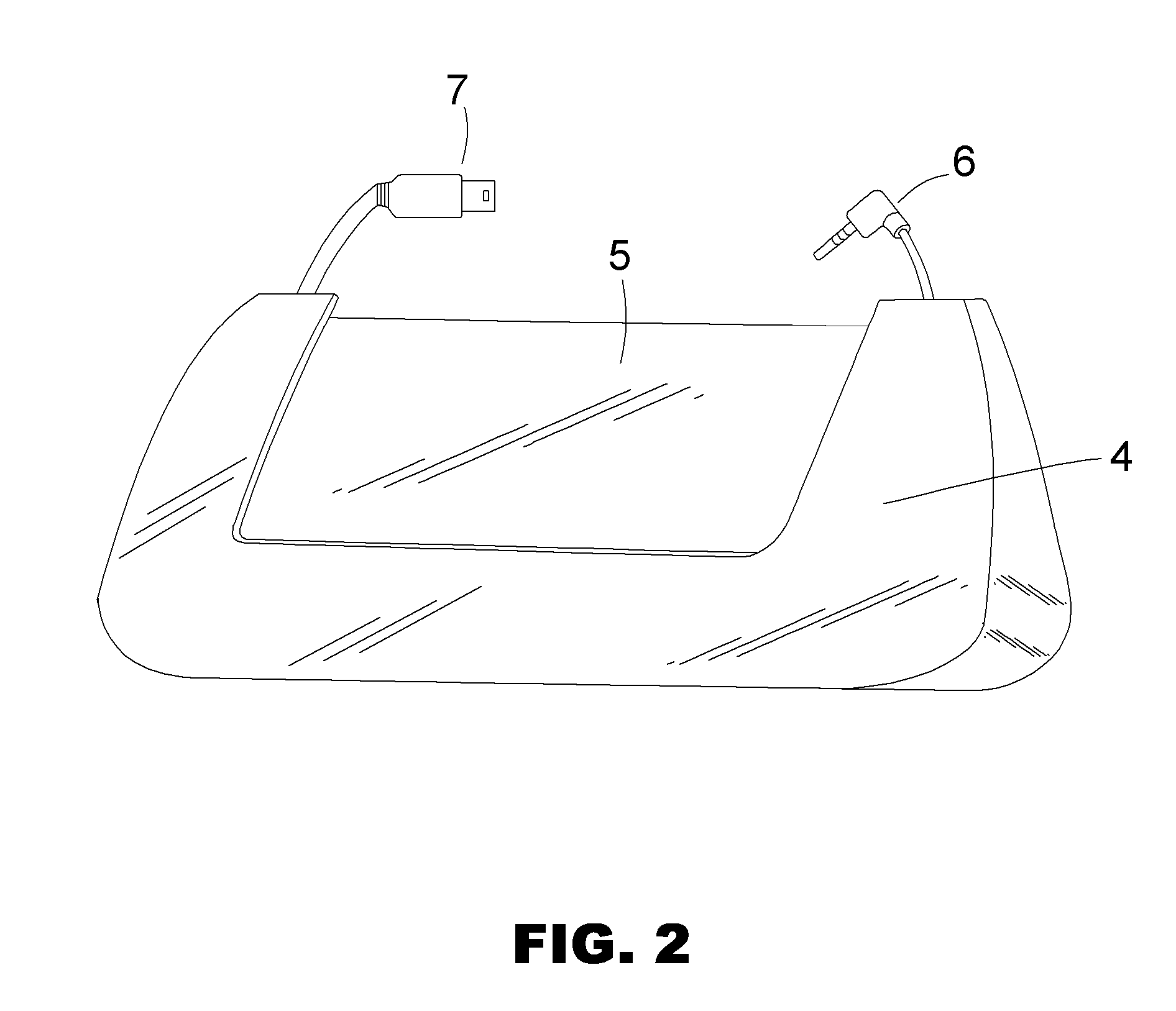Cellular Telephone Docking Interface
a technology of cellular telephones and interfaces, applied in the field of cellular telephone interfaces and docking units, can solve the problems of no single standard for either interfaces or connectors, no single standard for connectors, and no control of devices by connectors at all
- Summary
- Abstract
- Description
- Claims
- Application Information
AI Technical Summary
Benefits of technology
Problems solved by technology
Method used
Image
Examples
Embodiment Construction
[0025]The present invention relates to a standardized interface and cellular telephone dock that allows various mobile telephones and other electronic devices to communicate with and control devices such as cellular telephone audio speaker docks, alarm clocks, video, audio and music players and many other devices. In particular, the interface of the present invention is compatible with the ANDROID™ platform. The present invention also allows button pushes on the dock or a handheld remote unit associated with the dock to perform global metadata capture to the cellular telephone and a remote server thereby enabling user preferences and behaviors regarding media to be captured and organized across disparate applications and services allowing for unified management of media and communications.
[0026]Various parts of the invention can be bundled to create a standard interface (which can be called SONR). The parts typically consist of: 1) a cellular telephone software library, configuratio...
PUM
 Login to View More
Login to View More Abstract
Description
Claims
Application Information
 Login to View More
Login to View More - R&D
- Intellectual Property
- Life Sciences
- Materials
- Tech Scout
- Unparalleled Data Quality
- Higher Quality Content
- 60% Fewer Hallucinations
Browse by: Latest US Patents, China's latest patents, Technical Efficacy Thesaurus, Application Domain, Technology Topic, Popular Technical Reports.
© 2025 PatSnap. All rights reserved.Legal|Privacy policy|Modern Slavery Act Transparency Statement|Sitemap|About US| Contact US: help@patsnap.com



